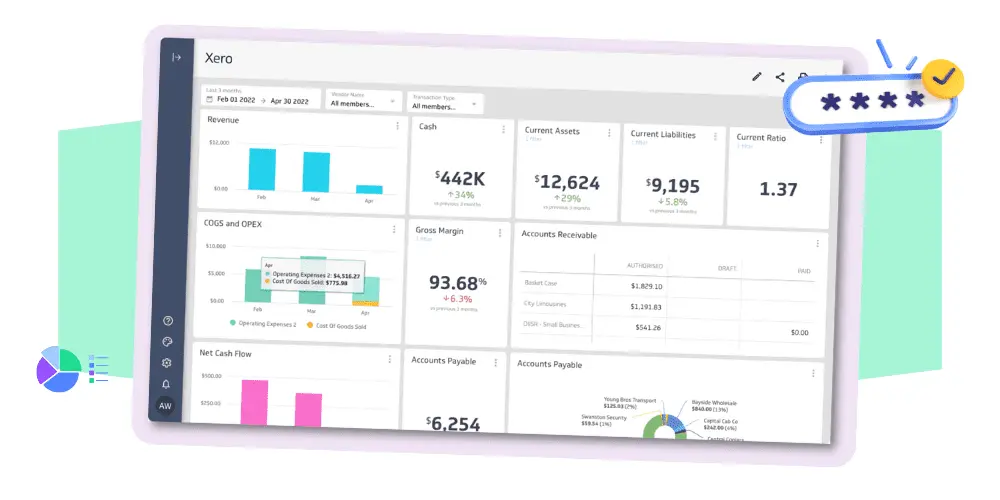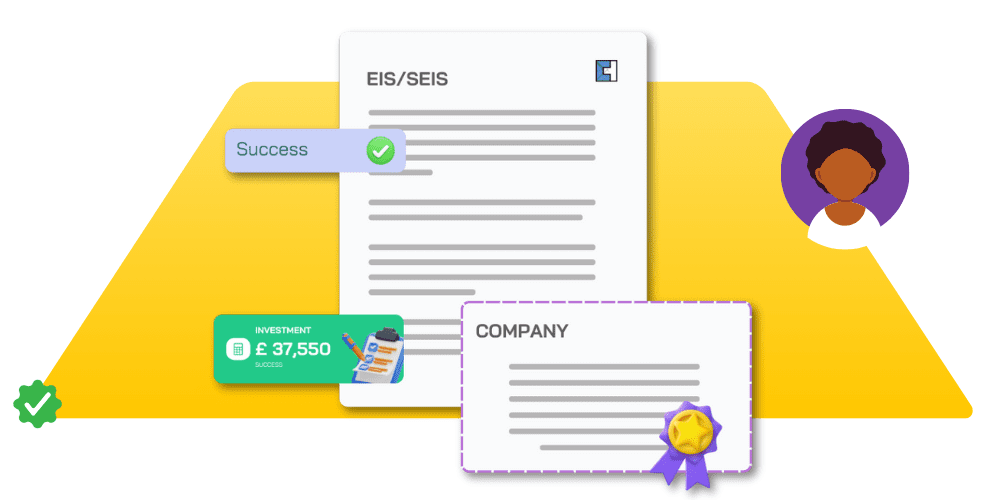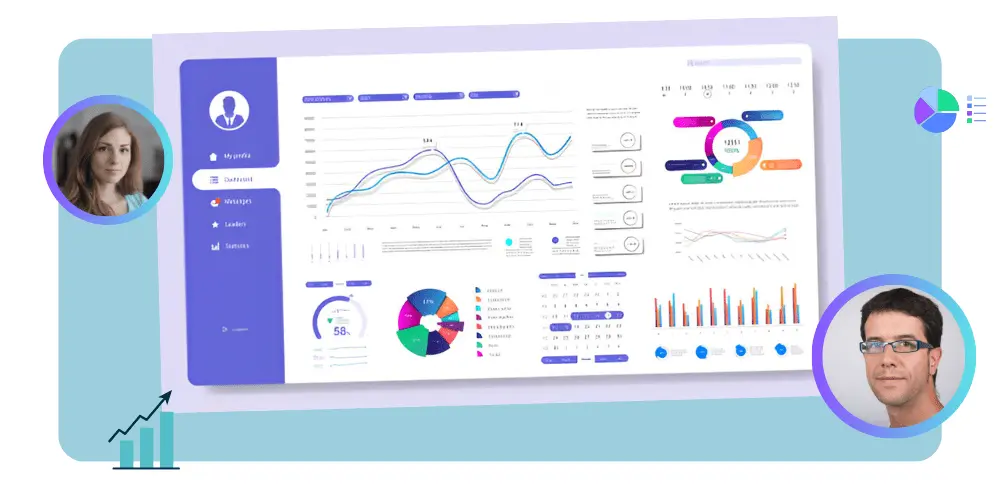Companies that do not have a clear understanding of R&D tax credits and their complexities might find it confusing at first. Applying for R&D tax credits may appear intimidating, but it is quite simple if you maintain accurate company records.
All the necessary information for submitting your claim will be readily available. The key is to adhere to the appropriate process and criteria. Unfortunately, this perceived complexity makes many businesses shy from claiming R&D tax credits for fear of making mistakes. If you are a creative business that is disrupting the market with new innovations, you should speak to a good startup accountant to make sure they can advise you on the key foundational strategies to avoid future complications.
However, errors can easily be avoided with a thorough understanding of R&D and the HMRC’s requirements for R&D tax credit applications.
HMRC has repeatedly emphasised that only enterprises engaging in actual R&D activities meet the criteria for R&D tax exemption under UK law.
From the beginning, HMRC has initiated audits of corporate tax returns to investigate R&D claims. An extra one hundred inspectors from HMRC are now concentrating on conducting inspections for R&D compliance due to the rising number of inquiries.
HMRC has recently begun sending out “nudge letters,” or letters designed to start an investigation, to firms to verify past R&D claims. Businesses who send these letters must back up their R&D tax claim with relevant details.
It’s never been more crucial to double-check the veracity of your R&D claims and steer clear of the most typical mistake of claiming R&D Tax allowance.
What is an R&D Tax Credit?
Research and Development Tax Credits provide a fantastic chance for British innovators to implement their ideas. When a business invests in R&D, the government offers a tax credit that may be used to offset current-year taxes and provide a rebate on taxes paid over the previous three years.
Since 2000, companies have had access to this influx of capital, allowing them to make significant advances in their innovative efforts while simultaneously reaping the benefits of government assistance. Nevertheless, figuring out how these monies are distributed involves some expertise, such as cost accounting and putting together a solid R&D technical report.
How Does R&D Tax Credit Work?
HMRC R&D tax credits are available to businesses that invest in creating new goods, processes, or services or improving current ones. R&D tax allowance claims might result in a cash reward and a decrease in Corporate Tax, depending on how much money you spend on research and development.
Finding R&D is a broad task since it occurs in every industry. Moreover, if this is your first claim, you may request R&D tax credits for the previous two accounting periods.

What Kinds of Activities Are Considered Research and Development?
Employee activities that contribute to R&D can be classified into two categories: direct and indirect activities. Examples of each are listed below:
Direct activities
- Conducting research to identify materials or solution requirements
- Engaging in development activities to create new products, processes, software, etc
- Building prototypes and testing them both in-house and on-site
- Planning R&D activities
- Designing and testing products
- Integrating and testing solutions
- Analyzing results
Indirect activities
- Conducting feasibility studies for R&D projects
- Providing R&D-related information services, including data collection
- Offering R&D personnel services, such as recruitment, training, payroll, etc.
- Managing R&D activities and projects
- Overseeing the financial management of R&D projects
- Providing R&D support activities, such as maintenance, security, and administrative and clerical tasks
Claiming R&D Tax Allowance
With the help of small and medium-sized enterprises (SMEs) R&D tax exemption, businesses have the benefit of:
- The standard 100% deduction plus an additional 130% of their eligible expenditures, for a total deduction of 230% of their annual earnings.
- If your business is making a loss, you can claim a tax credit for up to 14.5% of the surrenderable loss.
To be eligible for the exemption, you must be an SME and demonstrate how your project satisfies Government criteria for R&D. After the end of your accounting period, you have two years to file a claim for R&D relief.
You can claim the relief by recording it as a subtraction from the business’s earnings for the accounting period. You must include your claim in the corporate tax return or a subsequent supplement to the return.
You need to send the following:
- A complete form for a company tax return (CT600)
- Completed tax calculation
- If you want to claim a receivable tax credit or credit for R&D expenses, complete form CT600L.
You can email or attach additional documentation to HMRC to bolster your claim.
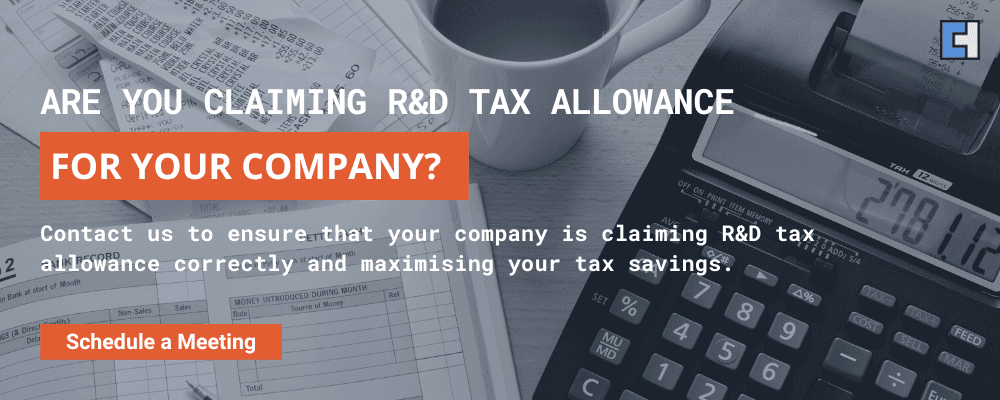
Which R&D Tax Credit Incentive Suits Your Business?
Whether you’re a small or big business will primarily determine the R&D tax incentive you pursue when applying for an R&D tax credit.
- SME:
The company has less than €100 million in revenue or gross assets of less than €86 million and employs less than 500 people. It describes the vast majority of businesses, including new ones.
- Large Business:
You qualify as a significant business if you have 500 employees or more and either €100 million in revenue or €86 million in gross assets.
SME R&D tax incentive claims may be submitted if your company qualifies as a small or medium-sized enterprise for R&D tax credit purposes. And via the Large Business Research and Development Tax Credit if you are a large business (RDEC).
12 Common Mistakes to Avoid When Claiming R&D Tax Allowance
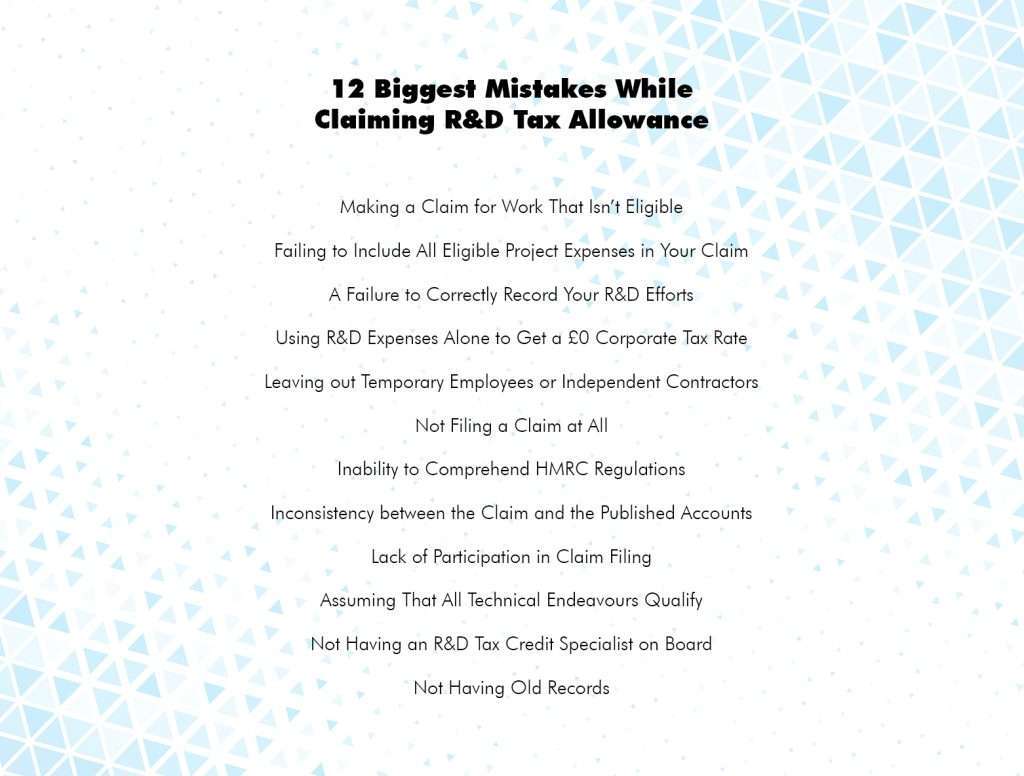
Making a Claim for Work That Isn’t Eligible
There are a lot of claims that wrongly contain work that doesn’t qualify. Often, this is because businesses are unsure about what kinds of activities qualify as R&D. Do not claim with the expectation that HMRC won’t catch on. That is especially true when a corporation is claiming a piece of software.
Nevertheless, HMRC has an in-house IT team whose only purpose is verifying software/Technology claims; therefore, doing so is a terrible idea. If HMRC identifies any inaccuracies in a company’s accounting practices, whether unintentional or not, it will likely initiate an investigation. This could result in significant complications, including substantial penalties and further legal action.
Failing to Include All Eligible Project Expenses in Your Claim
Claiming R&D funding without including all qualifying expenditures or adding charges that aren’t eligible is a typical mistake. A broad spectrum of expenses may be deducted, but the rules might be challenging. Claims may be underestimated and can even be further investigated by HMRC if they are not calculated correctly. The allocation of resources, especially time and money, is a typical source of inaccuracy.
Calculating the actual cost of materials and supplies may take time and effort. Some loopholes and nuances in the regulations may have an outsized effect on your claim. Energy and other consumables used during research and development are often eligible for reimbursement.
Prototyping a product is another use case that may qualify materials for inclusion. It rules out the possibility of their eligibility if they were integrated into a product that is subsequently sold in the ordinary course of business.
Careful thought must be given to the context in which these principles apply, and prior experience may be crucial when determining whether expenses qualify for reimbursement. In other cases, the extra qualifying material costs were not immediately apparent to the client. Still, they added hundreds of thousands of pounds to the returns.
Wages paid to everyone who contributed to the project may be included as employee expenses. Remember to include employer pension and national insurance payments. Additional expenses for research and development include transportation and lodging.
The worker must have fronted the money for these costs before receiving reimbursement. They cannot be included if their salary is straight from the company’s resources. These expenses are often overlooked or added when they do not qualify.
A Failure to Correctly Record Your R&D Efforts
One crucial aspect of submitting an R&D claim is to determine which projects are eligible for the claim. However, this step may also lead to a common mistake where unsuccessful R&D projects are excluded from the claim. There are two aspects that you need to consider while claiming an R&D tax allowance:
- Uncertainty in the field of work
- Scientific or technological advancement in the field
Uncertainty in the field of work
Firstly, uncertainties should be associated with the work you are undertaking, which you must have successfully resolved. These uncertainties must not have been easily resolved by an expert in your field.
Scientific or technological advancement in the field
Secondly, your project should aim to achieve a scientific or technological advancement that may be specific to your industry.
It can be challenging to interpret and apply these rules to your projects, and seeking professional advice is crucial. Excluding projects that meet the above-mentioned criteria from your R&D tax credit claim means that you are missing out on tax credits and not being recognized for your innovative work. Depending on the project, this mistake can significantly reduce the return on your claim. Our Technology Accountants have access to experts and the resources required to help you make a valid claim in the most efficient manner.
Using R&D Expenses Alone to Get a £0 Corporate Tax Rate
When filing a claim, it’s essential to remember that HMRC R&D Tax Credits affect more than simply your company’s tax liability in the year in which the qualifying research and development was performed. The mistake most companies make is to stop deducting R&D expenses after reaching zero taxable trading profit.
It would be a potentially massive oversight if significant portions of your expenses were left out of the claim. If, after deducting all qualifying expenses, your net trading profit is less than £0, you will benefit from the tax credit. It is possible to choose between two strategies when the R&D Tax Credit reduces your taxable trading profit to zero:
- If you have a trading loss, you may use it to offset future earnings and decrease your corporate tax bill.
- Your other option is to accept a financial settlement for your loss. This monetary payment may significantly impact a business’s ability to operate.
Leaving out Temporary Employees or Independent Contractors
Subcontractors and agency employees, generally known as Externally Supplied Workers (EPWs), are eligible for reimbursement of expenses. However, careful thought must ensure the costs are allocated fairly. There are three factors to take into account.
- The EPWs or sub-work contractors must have a bearing on the R&D effort. Their efforts are optional to meet the criteria for research and development. However, they can only submit a claim for the portion of the fee related to their work on the project.
- Is there a connection between the corporation claiming R&D and the third-party agency or sub-contractor? A relationship exists between two parties if they share shareholders or are managed by the same persons. According to Gov.uk, a company is connected with another company if:
- The same individual has control over both companies. Alternatively, if a person (person A) has control over one company, individuals connected to person A or person A have control over the other company.
- A group of two or more individuals has control over each of the companies. In this case, the same group of individuals controls both companies, or the groups could be deemed the same by treating a member of either group as being replaced by a person (person A) connected to that member.
- The R&D claim’s costs must be reduced by 65% if the parties are unrelated. HMRC may subject you to further scrutiny and penalties if you fail to deduct this amount.
Not Filing a Claim at All
Not filing for the R&D Tax Allowance is the worst mistake that could be made. In our fast-paced world, it’s simple to pass up promising prospects. Some individuals worry about whether their project will be eligible for tax credits.
Time constraints may also prevent you from claiming it. Yet, failing to take advantage of this program can cost you around £57,000, an average claim for a small to medium-sized enterprise (SME) in the latest year.
Inability to Comprehend HMRC Regulations
One of the most frequent mistakes made while requesting R&D tax credits is a failure to follow HMRC’s rules and regulations. You should learn the fundamentals of R&D tax claims before starting the procedure, even if you need help reading and comprehending all of the HMRC recommendations.
A basic familiarity with the tax credit system and the deductions available will get you well on your way.
Inconsistency between the Claim and the Published Accounts
HMRC often compares the numbers provided in an R&D claim with those provided in the claimant company’s public accounts to determine whether further information is required concerning a claim.
Therefore, the numbers provided in both documents must match. The inconsistencies within the company’s books and R&D claim may raise concerns and prompt inquiries from HMRC. Such scrutiny can result in unfavourable consequences that are best avoided, particularly if the discrepancies lack a reasonable explanation.
Lack of Participation in Claim Filing
It’s vital that the corporation making a claim participates in and owns the process. If HMRC have concerns around a claim, and those queries revolve around qualified experts and their participation in the projects, a claim that needs to be prepared with the claimant company’s complete knowledge and agreement at every step risks serious complications.
So make sure you have provided enough information to your accountant in this regard and are part of the preparation of the claim. Most advisors make the mistake of not involving claimant companies in the process. Therefore, it is crucial that you are working with a professional R&D expert filer who asks all the relevant questions.
Assuming All Technical Endeavours Qualify
The R&D initiatives must be conducted in a scientific or technological field, although not all technical projects automatically qualify for R&D tax credits. For instance, installing and deploying a new customer relationship management system can represent a technological benefit for the firm, but more is needed to get the project qualified for a claim. The project’s focus on advancing technology, as outlined in CIRD81900, is crucial.
Before including a project in a claim, it is best practice to analyse whether a technological improvement was intended and determine the technical challenges faced.
Not Having an R&D Tax Credit Specialist on Board
Working with a tax firm specialising in R&D tax credit claims is your best bet for a successful claim. Consulting an R&D tax credit specialist is recommended if you have any questions about whether or not your organisation engaged in qualifying R&D activities or whether any of your operations fall into that category.
Expert advice will be provided throughout the whole claims procedure to guarantee that your reimbursement is maximised as per HMRC regulations. You may file for R&D tax credits via your accountant (or do it yourself), but your chances of success will be much higher if you work with a company specialising in R&D tax credits.
Not Having Old Records
It is crucial to retain records to verify the technical work completed on each R&D project since claims may be made up to 2 years after the conclusion of an accounting period.
If a claim is made for an earlier accounting period, these records may serve as a helpful memory aid and provide evidence of the job performed.
Some examples of such documents include software architecture documentation, different source code versions, project plans, and CAD designs and revisions.

HMRC Tax Refund Mistake: What You Need to Know
Taking action as quickly as possible is crucial if you think HMRC needs to revise the tax refund it made to you. HMRC may make a mistake, and you have the right to appeal any judgments you think are flawed.
In the event that you believe that HMRC has made an error in calculating your tax liability, it is advisable to bring this to their attention through written correspondence or over the phone. Although there is no formal appeals process, you can request an explanation of the figures provided and raise objections where necessary.
If you discover inaccuracies in the calculations, it is recommended that you notify your tax office and request that they make the necessary corrections. It is to avoid overpaying taxes or an unexpected tax demand in the future.
It is worth noting that errors can occur during the processing of tax returns or inputting information into the computer system, which the HMRC can easily overlook. As such, it is essential that you carefully review any calculations you receive and seek clarification if any figures appear unusual or incorrect.
In case your tax office maintains the accuracy of their calculations, and you remain dissatisfied with the outcome, seeking personal tax advice may provide clarity on the matter.
Conclusion:
Filing an R&D Tax allowance claim can be daunting for many. Therefore, it is advisable to understand the R&D tax schemes and other complexities. It can provide significant financial benefits for businesses undertaking research and development activities. It is crucial to understand what research and development is, whether it is eligible for the claim or not, and to ensure that all eligible expenses are included in the claim. Failing to do so can result in mistakes that could lead to a loss of potential tax credits.
Additionally, it is crucial to comply with HMRC regulations and seek the advice of a qualified R&D tax credit specialist. By avoiding the 12 biggest mistakes outlined in this article, businesses can maximise their tax credit claims and gain a competitive advantage. Ultimately, the key to a successful R&D tax credit claim is understanding the process thoroughly, staying up-to-date on regulations, and seeking expert guidance.
For businesses looking to claim R&D tax allowance, it is highly recommended to seek the assistance of qualified R&D tax credit specialists. Clear House Accountants is a reputable firm with a team of experienced accountants who can provide guidance and support throughout the claiming process.
Additional Resources
















